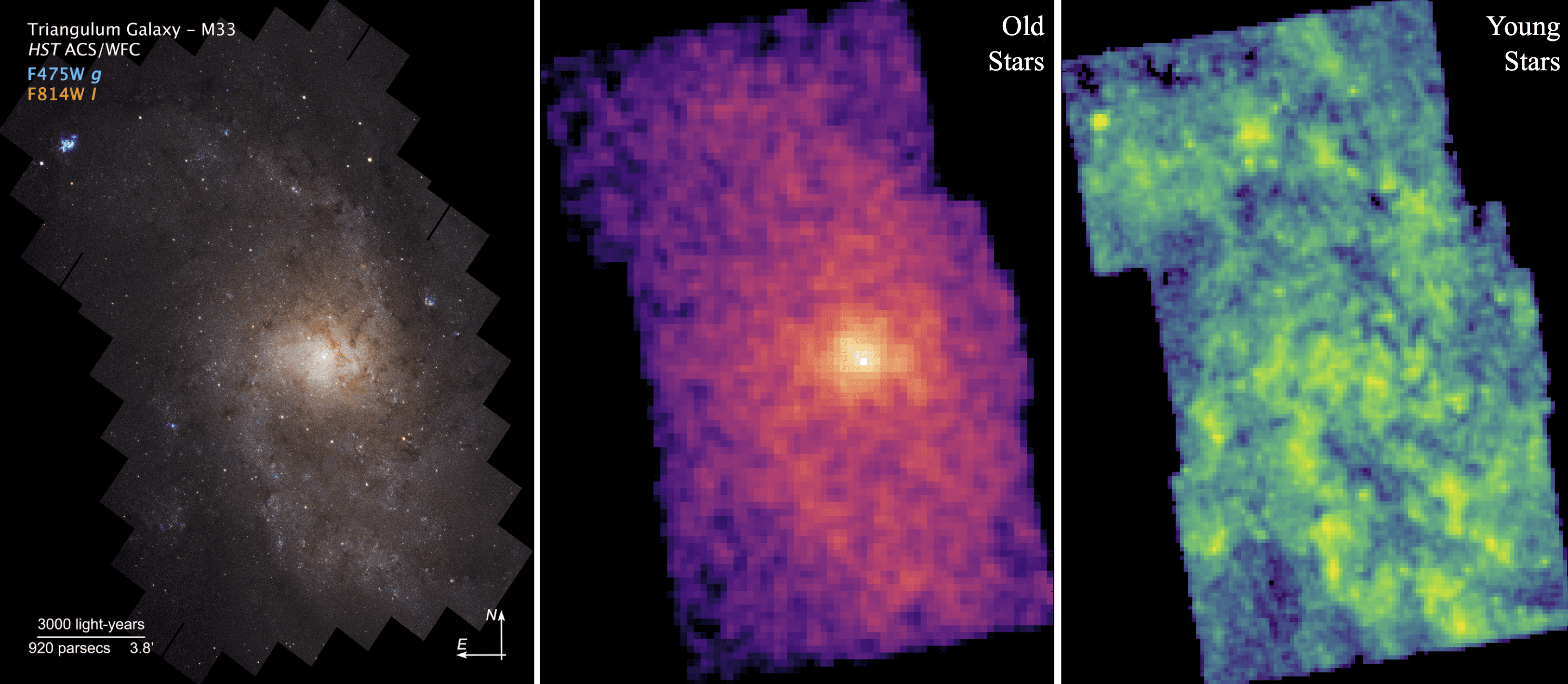After Andromeda and the Milky Way, the Triangulum galaxy is the largest galaxy in our local group of galaxies. And it might take the title of the weirdest based on a new analysis conducted by astronomers. It appears that the younger and older stellar populations are segregated by age creating a unique distribution but also a peculiar pattern in how the galaxy looks.
The galaxy is 61,000 light-years across. It has a rectangular distribution of stars at its center and two large well-defined spiral arms. That’s where the older stars, which represent most of the mass of the galaxy, are found. But the brighter younger stars are distributed in less defined spiral arms that spread about the main two. This is known as a flocculent pattern, as these stars’ clumps look like tufts of wool.

The full Hubble composite image (left), the one showing just the old stars (middle), and one showing only the young ones (right). Image Credit: A. Smercina/M.J. Durbin/J. Dalcanton/B.F. Williams/University of Washington/NASA/ESA
“The youngest stars and the oldest stars in the Triangulum galaxy – which we can separate out using multiple wavelength filters on the Hubble Space Telescope – are organized very differently,” said Adam Smercina, a postdoctoral researcher at the University of Washington, said in a statement. “This is surprising. For a lot of galaxies, like the Milky Way and Andromeda, the stars are distributed roughly consistently, regardless of their age. That is not the case with Triangulum.”
The observations were part of the Panchromatic Hubble Andromeda Treasury Triangulum Extended Region – or PHATTER – survey. It took the space telescope 108 orbits to observe all the different sections of the galaxy in such detail, providing not just deep images of this nearby galaxy but also the ages of its stars and their distribution.
“This was a largely unknown and hidden feature of the Triangulum galaxy that was very difficult to see without this kind of detailed survey,” added Smercina.
It is unclear why the stars are distributed like this. The team hopes to collect even more observations to help them understand the star formation history of this galaxy. This might provide insights into how the peculiar distribution came to be.
“A major goal of the PHATTER survey was to generate the kind of detailed, high-resolution data on this prominent satellite galaxy that will allow us to examine its structure in depth, trace its history of star formation and compare what we see to theories of galaxy formation and evolution,” said Smercina. “We’re already finding surprises.”
These results were presented at the 241st meeting of the American Astronomical Society in Seattle.
Source Link: There's Something Very Strange About Star Distribution In The Triangulum Galaxy